solution Use Case
Satellite Downlink Redundancy
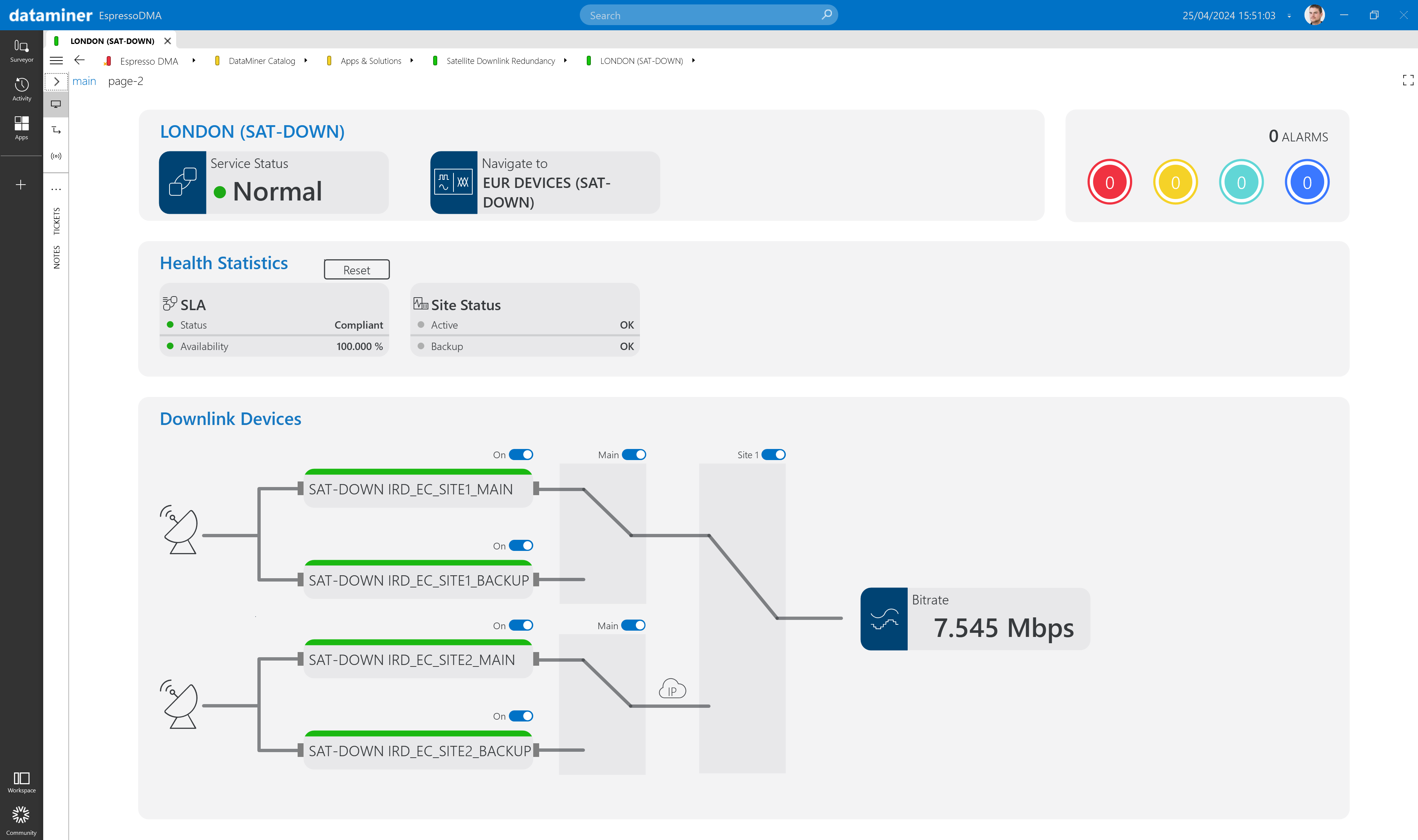
When it comes to satellite communications, ensuring uninterrupted reception and decoding of satellite feeds is a must. Our DataMiner software offers a robust solution within satellite downlink environments. In this use case, we’ll demonstrate how DataMiner positively influences the Quality of Service (QoS), and even adds an extra dimension to it. This is achieved by combining real-time monitoring and automated redundancy flows to switch across four resilient operation chains across two distinct sites.
DataMiner serves as the linchpin of this environment, orchestrating signal reception, demodulation, and crucial management tasks. Its intelligent algorithms continuously monitor the health of each chain, seamlessly orchestrating Failover procedures when necessary to maintain uninterrupted services.
Quality of Service (QoS) & service level agreements (SLA)
DataMiner is committed to uncompromising quality, meticulously measuring and maintaining QoS parameters at all times. Moreover, DataMiner helps operators in adhering to service level agreements (SLAs) by consistently gathering performance metrics and evaluating the predefined thresholds are met or exceeded, guaranteeing a seamless user experience. Additionally, the SLA management feature allows teams to visualize interruptions for analysis or reporting purposes.
Are your ready to explore this solution hands-on?
Begin by deploying it directly from the DataMiner Catalog. The solution will spin up as a simulation environment to help you get started.
USE CASE DETAILS
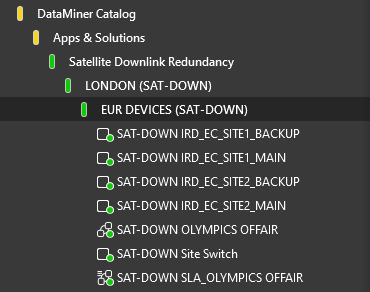 Once you have deployed the Catalog package, the Satellite Downlink Redundancy view will be added to your DataMiner Agent, alongside elements, services, and SLAs.
Once you have deployed the Catalog package, the Satellite Downlink Redundancy view will be added to your DataMiner Agent, alongside elements, services, and SLAs.
 When you navigate to the EUR DEVICES (SAT-DOWN) view, you'll find the visualization of two racks across the two sites, each housing two IRD elements that are the main focus of this use case. On the same page, the Details section provides specific information about the currently active IRD element, including relevant parameters like audio output level, left frequency, right frequency, alarms, and more.
When you navigate to the EUR DEVICES (SAT-DOWN) view, you'll find the visualization of two racks across the two sites, each housing two IRD elements that are the main focus of this use case. On the same page, the Details section provides specific information about the currently active IRD element, including relevant parameters like audio output level, left frequency, right frequency, alarms, and more.
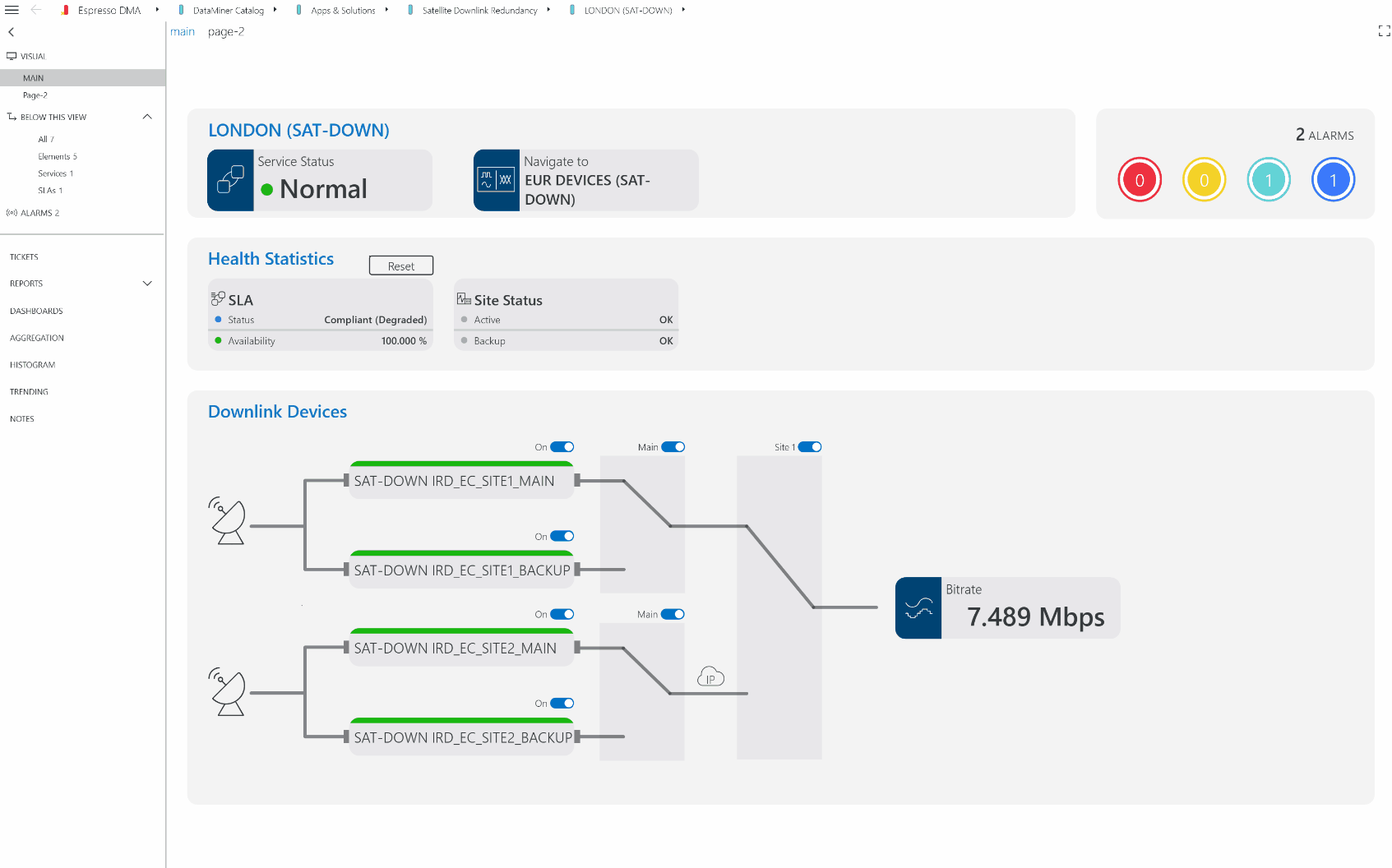 When an error is triggered on the primary active chain, an automatic Failover switch to the backup chain occurs. This switch ensures the outgoing service remains uninterrupted. To simulate this scenario for the sake of this use case, an error or alarm can be triggered by setting the toggle buttons next to each of the IRDs to Off. In the background, the DataMiner Correlation Engine initiates this situation, enabling the automatic Failover process to take effect.
When an error is triggered on the primary active chain, an automatic Failover switch to the backup chain occurs. This switch ensures the outgoing service remains uninterrupted. To simulate this scenario for the sake of this use case, an error or alarm can be triggered by setting the toggle buttons next to each of the IRDs to Off. In the background, the DataMiner Correlation Engine initiates this situation, enabling the automatic Failover process to take effect.
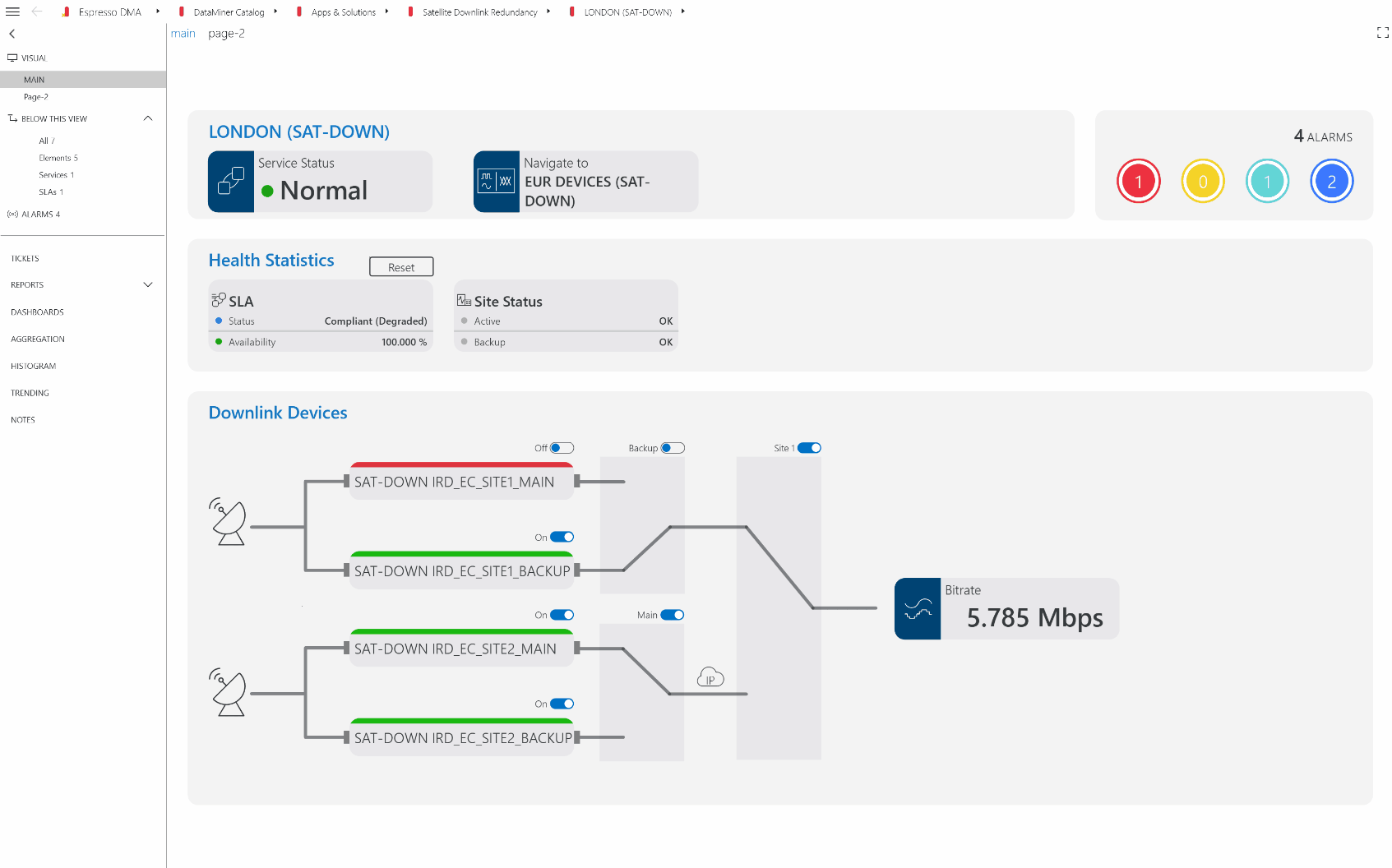 If critical errors occur on all chains at the same time, the Correlation Engine will prompt operator interaction. It will request you to switch to the redundant alternate site.
If critical errors occur on all chains at the same time, the Correlation Engine will prompt operator interaction. It will request you to switch to the redundant alternate site.
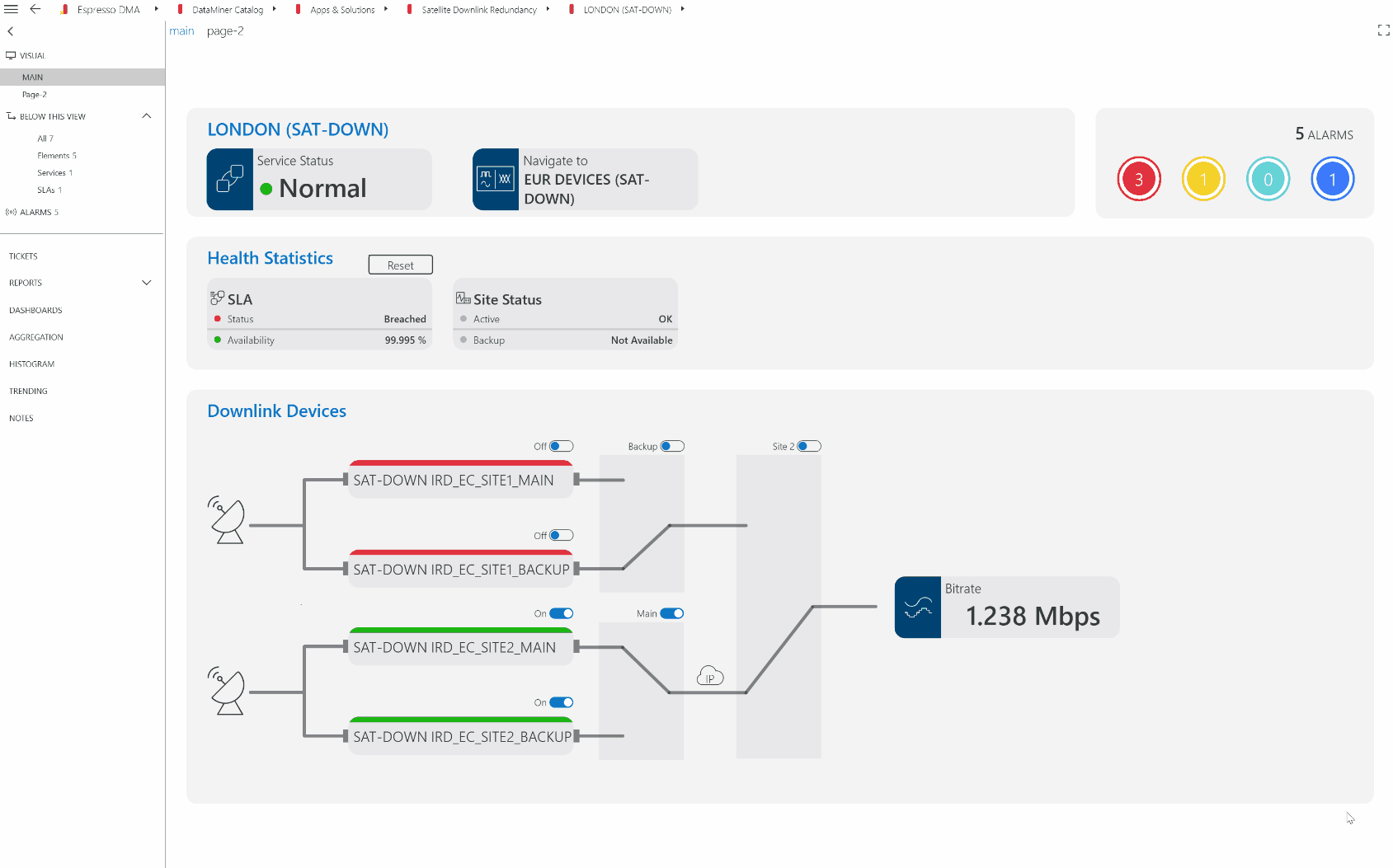 If errors occur on the IRDs at the backup site, the Correlation Engine will prompt you to take action once more. At this point, downtime for the service is inevitable as all chains are experiencing problems. Every outage will be registered in the SLA, enabling reporting and investigations to be conducted.
If errors occur on the IRDs at the backup site, the Correlation Engine will prompt you to take action once more. At this point, downtime for the service is inevitable as all chains are experiencing problems. Every outage will be registered in the SLA, enabling reporting and investigations to be conducted.
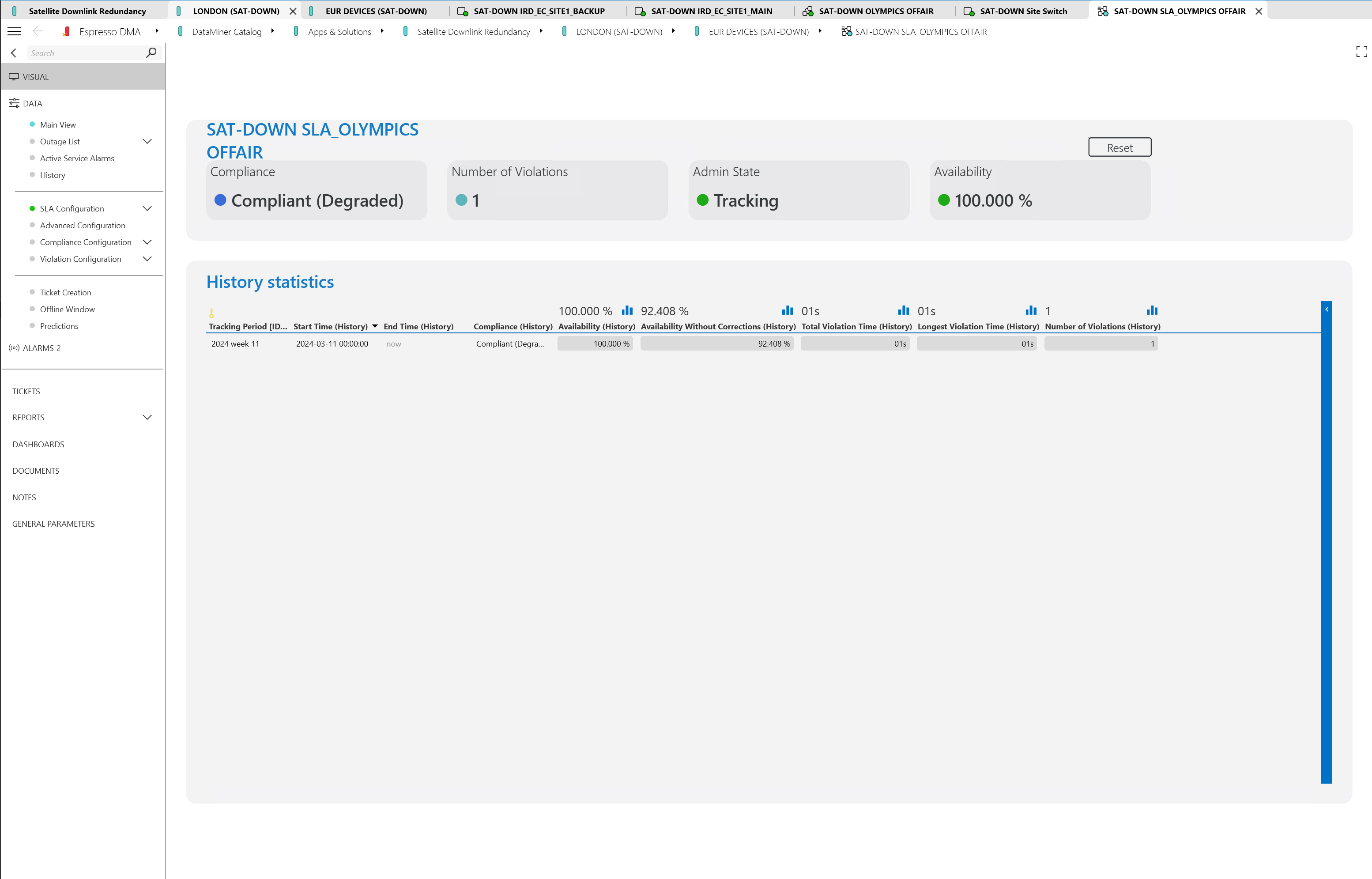 On the Visual Overview page of the SLA element, you can also access key information concerning both historical and current instances of site malfunction. You can configure the minimum service level percentage, including the number of accepted outages. This feature helps you manage services and provides valuable data for reporting purposes, serving as proof of your adherence to SLA commitments.
On the Visual Overview page of the SLA element, you can also access key information concerning both historical and current instances of site malfunction. You can configure the minimum service level percentage, including the number of accepted outages. This feature helps you manage services and provides valuable data for reporting purposes, serving as proof of your adherence to SLA commitments.
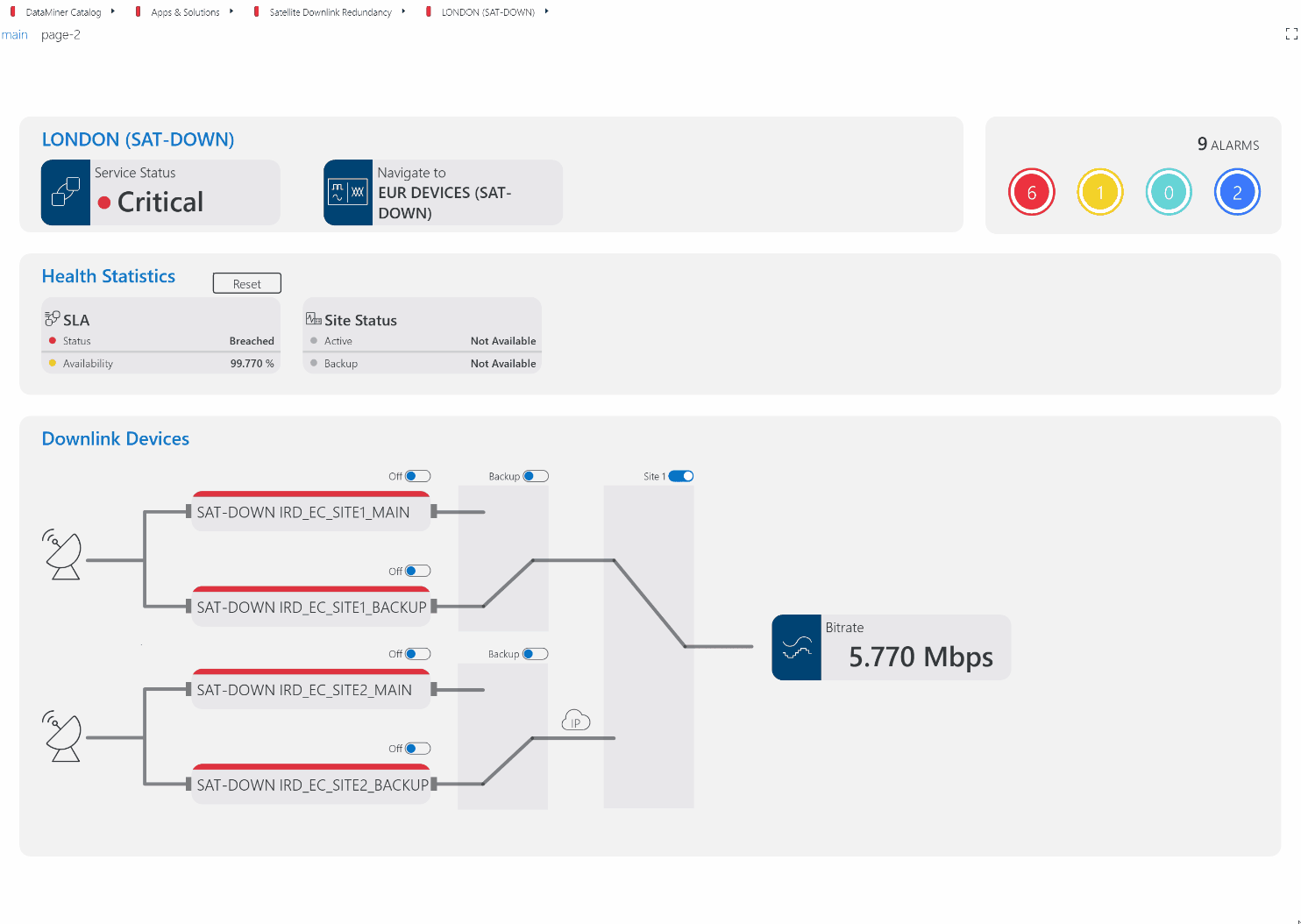 This Catalog package is intended for demonstration purposes only. If you deployed it, we hope you enjoyed playing around with the provided setup. You may even be interested in resetting the SLA counters to start over again, trying a different scenario. You can easily do so by clicking the Reset button included on the main Visual Overview page of the LONDON (SAT-DOWN) element.
This Catalog package is intended for demonstration purposes only. If you deployed it, we hope you enjoyed playing around with the provided setup. You may even be interested in resetting the SLA counters to start over again, trying a different scenario. You can easily do so by clicking the Reset button included on the main Visual Overview page of the LONDON (SAT-DOWN) element.NOTE: The Reset button will only be visible if you have the appropriate user rights, i.e. access level 4. See:
Configuring a user group | DataMiner Docs